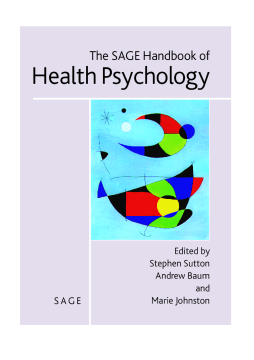
Additional Information
Book Details
Abstract
The SAGE Handbook of Health Psychology represents a landmark work in the field, gathering together in a single volume contributions from an internationally renowned group of scholars. It provides a definitive, one-stop, authoritative guide to the major themes and debates in health psychology, both past and present, and should in time become a classic reference work for a wide, international readership. Its coverage is comprehensive, both traditional and innovative, and reflects the latest in global health psychology research from a wide perspective. This includes the latest work in epidemiology of health and illness, health-related cognitions, chronic illness, interventions in changing health behaviour, research methods in health psychology and biological mechanisms of health and disease. As a result its potential as an authoritative entry point to those new to the discipline as well as those already working inside it is very high. Given its breadth of content and accessibility, the Handbook will be indispensable for advanced students as well as researchers. Expertly organized by editors of international stature, and authored by a similar team of luminaries in the field, this single volume Handbook is an essential purchase for individuals and librarians worldwide.
Table of Contents
| Section Title | Page | Action | Price |
|---|---|---|---|
| Acroynyms and abbreviations | |||
| Foreword: Oxfam | |||
| Foreword: Unilever | |||
| Executive summary | |||
| 1 Introduction | |||
| Why Oxfam and Unilever began this project | |||
| What is this research about? | |||
| Methodology | |||
| The context of the research project | |||
| Assessing the impact of Unilever Indonesia | |||
| 2 The impacts of Unilever Indonesia at the macro-economic level | |||
| Setting the context: the 1997-98 financial crisis | |||
| Unilever's organisation and recent performance in Indonesia | |||
| UI's response to the financial crisis | |||
| Key insights | |||
| 3 The employment impacts of Unilever Indonesia | |||
| Employment in Indonesia | |||
| UI's employment impacts | |||
| Key insights | |||
| 4 The value chain from supply to distribution | |||
| Supplier companies | |||
| Producers of raw materials | |||
| Kecap Bango Sweet Soy Sauce: from farm to fork | |||
| The distribution chain | |||
| Supporting employment and value generation in UI's value chain | |||
| Key insights | |||
| 5 Low-income consumers in the marketplace | |||
| The fast-moving consumer-goods (FMCG) market in Indonesia | |||
| What exactly does UI sell? | |||
| Who buys UI products? | |||
| Access to UI products | |||
| Why do people buy UI products? The concept of brands | |||
| The role of promotion and advertising | |||
| Meeting or creating needs? | |||
| Key insights | |||
| 6 UI's wider impact in the community | |||
| Corporate community involvement | |||
| UI's influence on the business sector and government | |||
| Key insights | |||
| 7 Conclusions | |||
| Content: lessons learned from the research project | |||
| Process and partnership: lessons learned from working together | |||
| Feedback from external reference group | |||
| The way forward | |||
| Notes | |||
| References and sources | |||
| Appendices |
